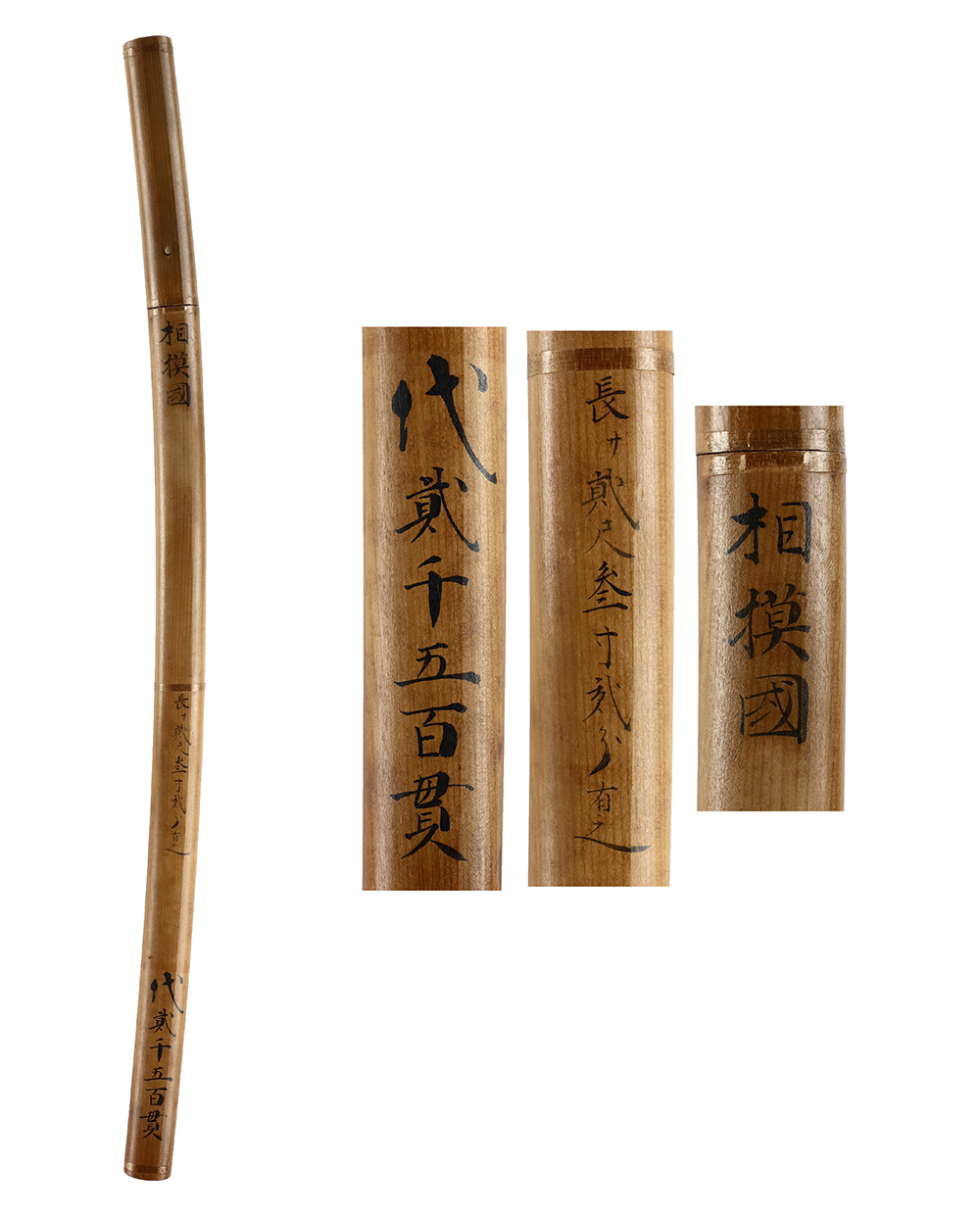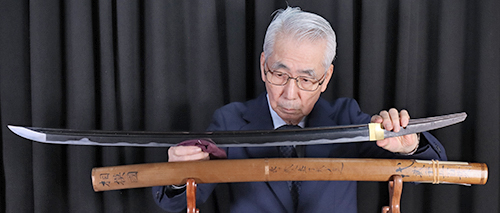Description
Katana: In Shirasaya (NBTHK Tokubetsu Hozon Token)
Signature: Mumei (attributed to Tametsugu, 為継)
Sayagaki: Sagami Province
Blade length: 2 shaku 3 sun 2 bu (70.3 cm / 27.68 in)
Value: 2,500 kan
Koto: Jyo Saku: Wazamono: Ecchu
We divide 4 sections for each sword as Saijyo Saku, Jyojyo Saku, Jyo Saku and Regular Saku.
This piece is ranked as Jyo Saku among works attributed to Tametsugu.
Habaki: solid gold (probably) double habaki
Blade Length: 70.3 cm (27.68 in)
Curvature: 1.2 cm (0.47 in)
Mekugi Hole: 2
Width at Base (Motohaba): 3.47 cm (1.37 in)
Width at Tip (Sakihaba): 2.78 cm (1.09 in)
Thickness of rim (Kasane): 0.56 cm (0.22 in)
Sword Weight: 710 g
Era: Nanbokucho period, around Oan era (1368)
Shape: A grand and imposing blade with wide body, thick kasane, and a long kissaki. A bohi (groove) is carved on both sides, running through to the tip. The curvature is well-pronounced.
Jigane: A tight and beautiful ko-itame hada. Utsuri appears clearly, and in some areas is so strong it resembles the hamon.
Hamon: Deep nioiguchi with gunome-midare. Abundant activity with strong kinsuji and sunagashi. The boshi is irregular and finishes in a sweeping hakikake style.
Features: This blade was once thought to be a work of Sadamune, but upon NBTHK examination, it was attributed to Tametsugu. Although this may be disappointing, the blade has a wide mihaba, thick kasane, and displays the energetic features of the Soshu tradition. The hamon and boshi show strong characteristics of Soshu-den.
Tametsugu was a swordsmith from Ecchu who was active around the Oan era (1368) during the Nanbokucho period. He was a student of Go Yoshihiro and is said to have later moved to Fuwa district in Mino Province.
Aoi Art’s Comment: This sword has a wide body, thick kasane, and long kissaki, giving it a powerful appearance. Although it was once regarded as a work of Sadamune, which seems understandable based on its quality, Sadamune is not known to have made such thick and long-bladed swords. His works tend to have a lower hamon and more intense internal activity like sunagashi and kinsuji. Furthermore, authentic signed Sadamune works are only known in the form of tanto. Based on the style of such tanto, some long blades have been attributed to Sadamune, but no signed long sword by him is currently known.
NBTHK Tokubetsu Hozon Token
Aoi Art estimation paper: Whole Oshigata








 日本語
日本語





